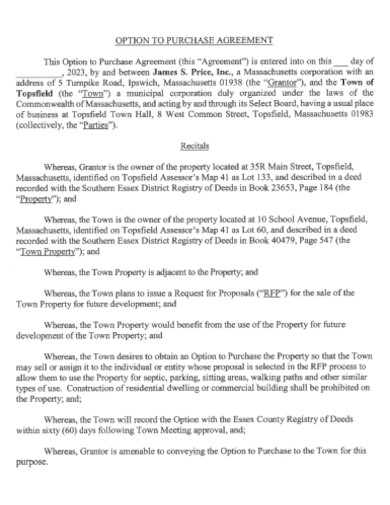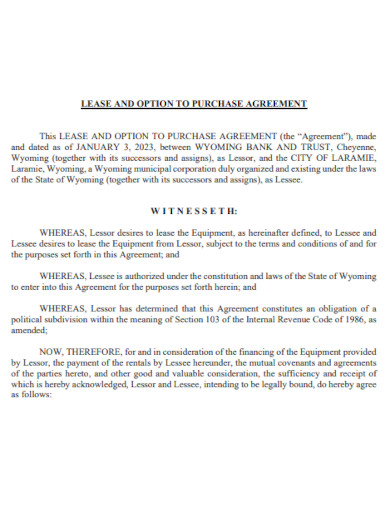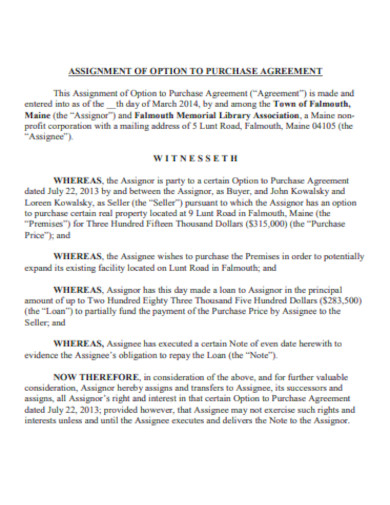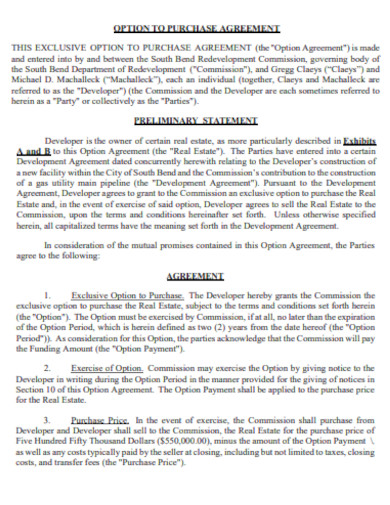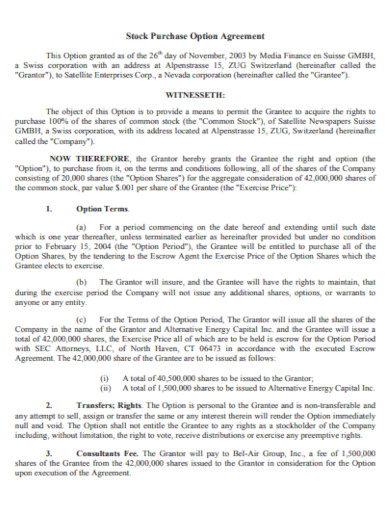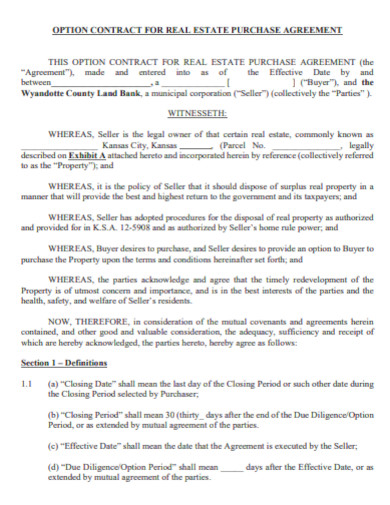10+ Option to Purchase Agreement Samples
1. Residential Lease with an Option to Purchase Agreement
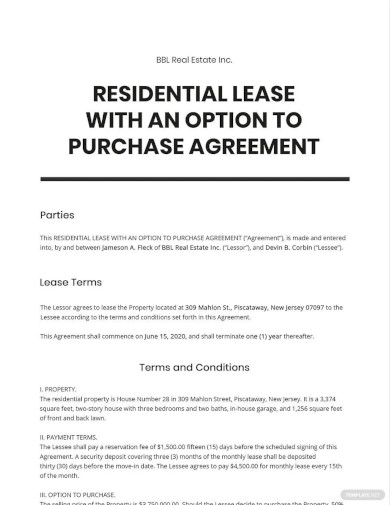
2. Sample Option to Purchase or Buy Agreement Template
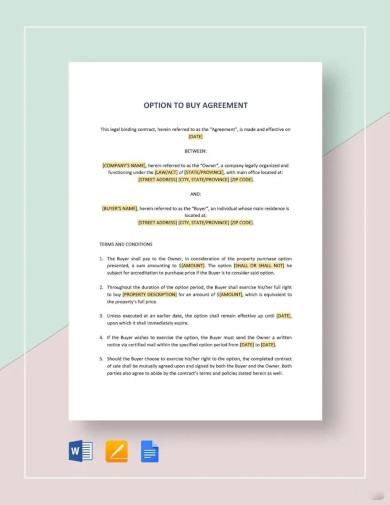
3. Sample Land Purchase Option Agreement Template
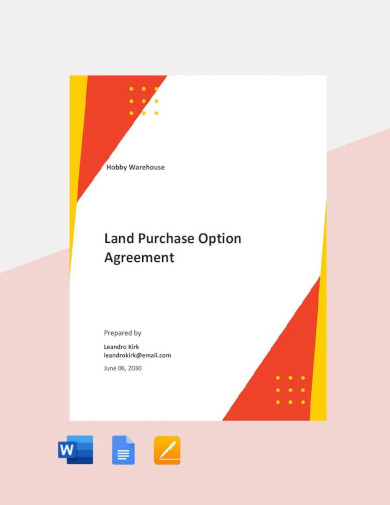
4. Sample Management and Option to Purchase Agreement
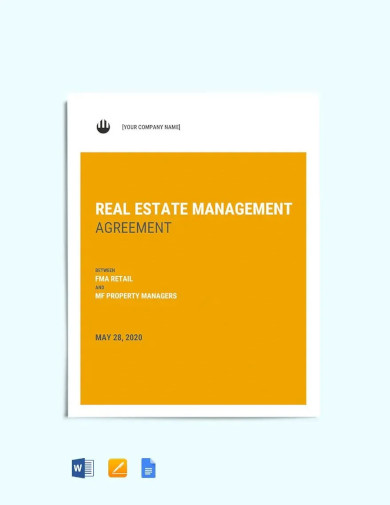
5. Sample Real Estate Purchase Option Agreement Template

6. Printable Option to Purchase Agreement Template
7. Sample Lease and Option to Purchase Agreement
8. Sample Assignment of Option to Purchase Agreement
9. Sample Option to Purchase Property Agreement
10. Sample Stock Option to Purchase Agreement
11. Sample Contract Option to Purchase Agreement
How do you Write an Option to Purchase Agreement?
Writing an Option to Purchase Agreement requires careful attention to detail and a clear understanding of the terms and conditions that will be agreeable to both parties. Here’s a step-by-step guide to help you draft this document:
Step 1: Title and Introduction Start with a title that clearly identifies the document as an Option to Purchase Agreement. Follow with an introductory paragraph stating the date of the agreement and the names and addresses of both the optionor (seller) and the optionee (buyer).
Step 2: Description of the Property Provide a full legal description of the property. This should include the physical address, legal boundaries, parcel number, and any other identifiers that would clearly describe the property being considered for purchase.
Step 3: Grant of Option Clearly state that the optionor grants the optionee the exclusive option to purchase the property. This section should also specify any actions the optionee must take to maintain the validity of the option, such as paying property visits or maintaining insurance.
Step 4: Option Term Define the duration of the option period. Specify the start date and the exact date and time the option will expire.
Step 5: Option Fee Detail the amount of the option fee, payment method, and terms. Clarify that this fee is typically non-refundable and whether it will be credited to the purchase price upon the exercise of the option.
Step 6: Purchase Price State the agreed-upon purchase price that will apply if the optionee decides to exercise the option to purchase.
Step 7: Exercise of Option Outline the process by which the optionee can exercise the option. Include the form of notice required and any deadlines for giving notice.
Step 8: Terms and Conditions List any contingencies or conditions that must be satisfied before the option can be exercised, such as financing approval or satisfactory completion of a property inspection.
Step 9: Default and Remedies Describe the consequences for either party’s failure to perform as agreed and the remedies available to the non-breaching party.
Step 10: Signatures Include a section at the end of the document for both parties to sign and date, indicating their agreement to the terms. It is often recommended to have these signatures notarized.
Step 11: Legal and Miscellaneous Provisions Add any additional legal provisions required by local or state law, such as disclosures about the property’s condition, zoning laws, or environmental assessments. Also, include a clause stating that the agreement is governed by the laws of the state where the property is located.
Step 12: Review and Consultation Before finalizing the agreement, have it reviewed by a legal professional to ensure that it complies with all applicable laws and fully protects the rights of both parties.
Step 13: Execution and Copies Once the document is finalized and signed, ensure that both parties receive a copy for their records. The original should be kept in a secure location, such as with a legal representative or in a safe deposit box. You can also see more templates like Lease to Own Agreement Samples.
Can you sell an Option to Purchase Agreement?
Whether an option can be sold depends on the terms of the agreement. Some options are transferable, while others are not.
How does an Option to Purchase Agreement work?
The buyer pays an option fee for the right, but not the obligation, to purchase an asset at a later date. If the buyer decides to proceed, they exercise the option according to the terms set out in the agreement.
What is the Option to Buy Shares Agreement?
An Option to Buy Shares Agreement, also known as a stock option agreement, is a contract between a company and an individual that gives the individual the right, but not the obligation, to purchase a set number of shares of the company at a predetermined price, known as the strike price, within a specified time frame. This type of agreement is often used as part of employee compensation packages to incentivize employees by allowing them to potentially profit from the growth of the company’s value.
In Conclusion, an option to purchase agreement is a strategic tool for both buyers and sellers in the real estate market. It offers buyers the chance to secure a property and sellers an opportunity to potentially sell for a better price. However, it’s essential for both parties to understand the terms and implications of the agreement fully. As with any legal contract, consulting with a real estate attorney can provide valuable guidance and ensure that the agreement meets all legal requirements.
Related Posts
Sample Excuse Letter for School
Feature Writing Samples
FREE 10+ Security Guard Contract Samples in PDF | MS Word
FREE 26+ Curriculum Form Samples in MS Word | PDF
FREE 20+ Cleaning Service Proposal Samples in PDF | MS Word
FREE 29+ Sample Loan Application Form Templates in MS Word | PDF
FREE 10+ Event Venue Contract Samples in PDF | MS Word | Pages | Google Docs
FREE 10+ SBAR Samples in PDF | DOC
FREE 12+ Music Band Contract Templates in PDF | MS Word
FREE 10+ HVAC Maintenance Contract Samples in PDF | MS Word
FREE 10+ Social Media Marketing Contract Samples in MS Word | PDF
FREE 10+ Wholesale Assignment Contract Samples in PDF
FREE 18+ Financial Proposal Samples in PDF | MS Word | Google Docs | Pages
FREE 10+ Feasibility Study Samples in PDF
FREE 20+ Readiness Checklist Samples in PDF

